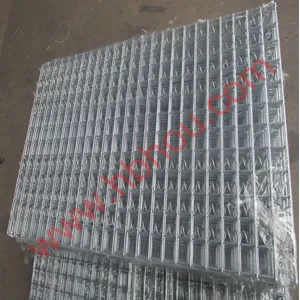The Versatile World of Gabions A Sustainable Solution
In recent years, the construction and landscaping industries have seen a resurgence in the use of gabions, a term derived from the Italian word gabbione, meaning big cage. Traditionally made from strong wire mesh, gabions are filled with various materials, most notably rocks, stones, or gravel. This innovative technique has become a favorite among engineers, architects, and landscape designers due to its numerous advantages, including sustainability, aesthetics, and functionality.
Historical Context
Although the use of gabions dates back to ancient civilizations, where soldiers utilized them for fortifications and earthworks, their modern application has evolved significantly. Today, gabions are not just elements of defensive structures but versatile tools employed in various landscaping and civil engineering projects, from riverbank stabilization to retaining walls and decorative features.
Environmental Benefits
One of the most significant advantages of gabions is their environmental sustainability. Constructed from natural materials, gabions have a low carbon footprint compared to conventional building materials. Their permeable design allows for natural water drainage, reducing the risk of flooding and soil erosion. When filled with locally sourced stones or recycled aggregates, gabions minimize transportation emissions and promote the utilization of nearby resources.
Furthermore, gabions can foster biodiversity
. When used in landscaping, they can serve as natural habitats for small animals, insects, and plants, supporting local ecosystems. The gaps and spaces within gabions can nurture vegetation growth, encouraging the natural colonization of flora, which enhances the surrounding environment.Durability and Structural Integrity
gabion

Gabions are remarkably durable and capable of withstanding harsh weather conditions. Their inherent flexibility allows them to adapt to shifts in soil and load pressure, making them an excellent choice for areas prone to erosion or landslides. In addition, the use of galvanized or coated wire mesh enhances their lifespan, protecting them from corrosion and wear.
The structural integrity of gabions can also be tailored to the specific needs of a project. Engineers can design gabion structures to varying heights, dimensions, and fill materials, ensuring their functionality aligns with the intended purpose, whether it's contending with high water flow or providing a decorative element in a garden.
Aesthetic Appeal
While the functional benefits of gabions are significant, their aesthetic potential cannot be overlooked. They can serve as appealing architectural features in both urban and rural settings. Designers can play with color, texture, and arrangement by selecting different stone types and sizes for filling. Gabions have been successfully integrated into modern landscape designs, serving as decorative walls, seating areas, or garden beds.
Moreover, their versatility allows for the creation of unique and contemporary outdoor spaces that appeal to a wide range of tastes and preferences. By incorporating greenery into the design, such as climbing plants or succulents, gabions can transform into living sculptures that change with the seasons, thus continuously engaging those who interact with them.
Conclusion
Gabions represent a remarkable blend of utility, sustainability, and beauty. As society evolves towards more eco-friendly building practices, the popularity of gabions is likely to continue to grow. Their ability to serve multiple purposes—from erosion control to aesthetic enhancement—makes them a valuable asset in both civil engineering and landscape architecture. As we look towards the future, embracing innovative solutions like gabions will be essential in creating resilient and sustainable environments that harmonize with nature. Whether for practical applications or creative landscaping, gabions stand as a testament to the ingenuity of human design and the enduring relationship we share with our environment.
















